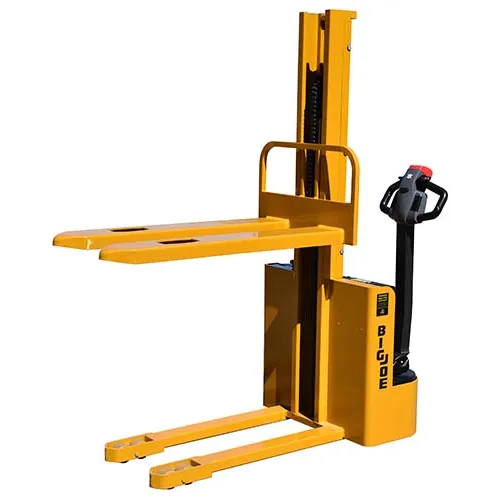Pallet Inverter: How to Rotate Heavy Furniture Pallets Without Damage?
Have you ever looked at a massive, fully loaded pallet of valuable goods, like high-end furniture, and felt a knot in your stomach? You know the pallet underneath is damaged or needs to be swapped for an export-compliant one. The problem is, tilting or manually lifting that heavy, awkward load is a recipe for disaster. One slip could mean thousands of dollars in damaged product, not to mention the risk of injury to your team. You feel the pressure because every damaged item eats into your profit, and inefficient processes create bottlenecks that slow down your entire operation. What if there was a way to rotate that entire palletized load smoothly and safely in under a minute, without anyone ever touching the product itself?
A pallet inverter is a specialized piece of equipment designed to solve this exact problem. It securely clamps a palletized load, rotates it 180 degrees, and allows for the quick and safe replacement of the pallet at the bottom. This process eliminates the need for manual restacking, drastically reduces the risk of product damage, and protects workers from strenuous lifting, ensuring your heavy furniture pallets are rotated without any harm.
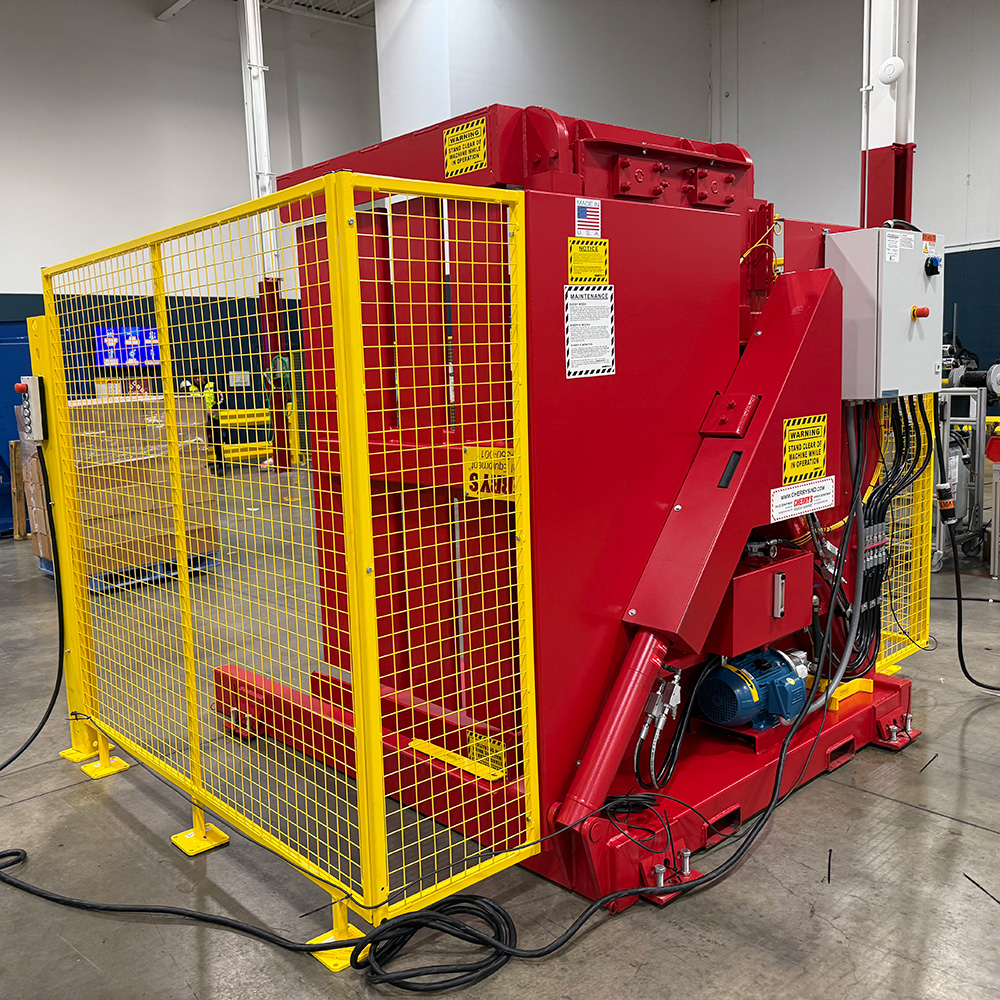
This might sound like a simple solution, but its impact on a business's bottom line and operational flow can be huge. I've seen it firsthand in my years in the packaging industry. Moving from risky manual methods to a streamlined, automated solution is a game-changer. Let's dive deeper into how this technology works and why it might be the missing piece in your logistics puzzle.
What Exactly is a Pallet Inverter and How Does it Work?
You're facing a common but frustrating warehouse problem: a pallet is broken, or you need to switch from a wooden pallet to a plastic one for hygiene or export reasons. The load is heavy, fragile, and valuable. The thought of your team manually unstacking and restacking everything is daunting. It's slow, labor-intensive, and the risk of dropping or damaging something is incredibly high. You know there has to be a better way. This is where a pallet inverter becomes not just a convenience, but a necessity.
A pallet inverter, also known as a pallet changer or pallet flipper, is a machine that grips a full pallet load and rotates it, typically 180 degrees. This allows you to access and exchange the original pallet from the top of the load easily and safely. The process is straightforward: a forklift places the entire pallet into the inverter, the machine's clamping platforms secure the load from the top and bottom, it rotates, and then the old pallet can be lifted away and replaced with a new one.
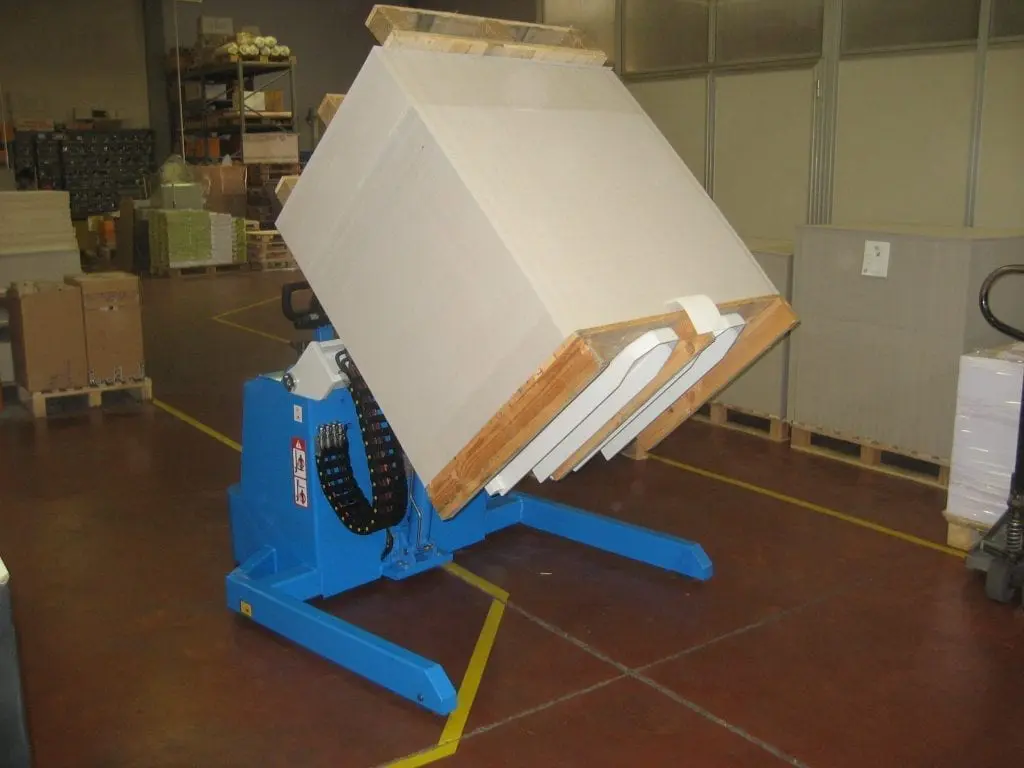
Breaking Down the Mechanics
To truly appreciate how a pallet inverter protects heavy loads like furniture, we need to look at its core components and the process step-by-step. It’s a beautifully simple piece of engineering, and that simplicity is what makes it so reliable.
Core Components:
- Loading Platform: This is the base where the forklift driver places the palletized load. It needs to be robust and perfectly level to ensure stability from the very start.
- Clamping System: This is the most critical part. It usually consists of two pressure-adjustable platforms. When activated, one platform lowers from the top to press down on the load, while the loading platform acts as the bottom clamp. The pressure is key; it must be strong enough to hold everything securely during rotation but gentle enough not to crush the products. For furniture, this means no dents or scratches on wooden surfaces. Modern systems use hydraulic or electric actuators for precise pressure control.
- Rotation Mechanism: This is the heart of the inverter. It's a powerful motor and gearing system that smoothly rotates the entire clamped load. Most models perform a 180-degree rotation, but some specialized units offer 90-degree or 360-degree options. The smoothness of this rotation is vital to prevent any shifting of the items on the pallet.
- Control Panel: This is the machine's brain. A simple, intuitive control panel allows a single operator to manage the entire process—loading, clamping, rotating, and releasing—with the push of a few buttons.
The Step-by-Step Process
Let's walk through a typical cycle for rotating a pallet of heavy furniture:
- Loading: A forklift brings the pallet of furniture and places it onto the inverter's base.
- Clamping: The operator initiates the clamping sequence. The top platform gently descends until it makes secure contact with the top of the load. The system applies a pre-set, safe pressure.
- Rotation: The operator presses the rotate button. The machine smoothly turns the entire unit—platforms and load—180 degrees. The furniture is now upside down, resting securely on what was the top clamping platform.
- Pallet Exchange: The base platform, which now holds the original, empty pallet, opens or retracts. The operator can easily remove the old pallet with a forklift or pallet jack.
- New Pallet Placement: A new pallet is placed onto the load.
- Return Rotation: The machine rotates back 180 degrees to its original position.
- Unclamping: The clamping platforms release the pressure, and the newly palletized load is ready to be removed by a forklift.
This entire process often takes less than 60 seconds. It’s a stark contrast to the 15-20 minutes and multiple staff members it would take to do the same job manually, with far greater risk.
Why is Manual Rotation of Heavy Pallets a Risky and Costly Mistake?
Picture your warehouse floor. Your team is gathered around a tall pallet stacked with heavy, boxed dressers. Their task is to move the entire stack to a new pallet. They start by lifting the top box, moving it, then the next, and the next. This manual process seems like a basic part of logistics, but it's a hidden drain on your resources. You're not just paying for their time; you're paying for the inefficiency, the risk of injury, and the inevitable product damage that comes with it. Every minute they spend on this repetitive, non-value-added task is a minute they aren't spending on picking, packing, or shipping. It's a costly mistake that compounds over time.
Relying on manual labor to rotate or transfer heavy pallet loads is a high-risk strategy that directly impacts your bottom line. It introduces significant costs in three key areas: labor, damage, and safety. A single incident of a dropped box or a strained back can wipe out the profit from an entire shipment. This method is fundamentally unsustainable for any business looking to grow and optimize its operations.
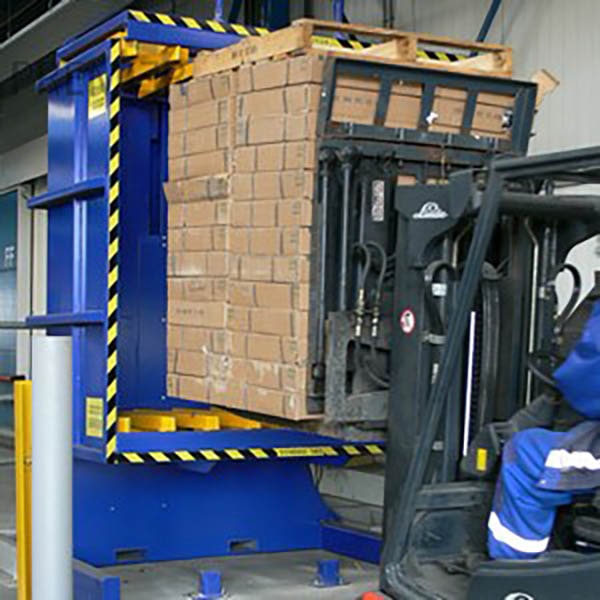
Unpacking the True Costs of Manual Handling
When I visit factories and warehouses, owners often focus on the upfront cost of new equipment. I understand that. But I always ask them to calculate the hidden costs of not investing. The numbers are often shocking. Let's break down the real-world expenses tied to manually handling heavy pallets, like those with furniture.
The Financial Drain of Labor Inefficiency
Manual restacking is a time-killer. Let's create a conservative comparison.
| Metric | Manual Restacking | Pallet Inverter |
|---|---|---|
| Personnel Required | 2-3 employees | 1 operator |
| Time per Pallet | 15-25 minutes | < 1 minute |
| Labor Cost (Example) | 2 people x 20 min @ $20/hr = $13.33 | 1 person x 1 min @ $20/hr = $0.33 |
| Throughput | ~3 pallets per hour | ~60 pallets per hour |
As you can see, the direct labor cost per pallet is astronomically higher with the manual method. If you transfer just 10 pallets a day, you're looking at over $130 in labor for the manual method versus about $3.30 with an inverter. Over a year, that's a difference of over $30,000 in labor costs alone for a relatively small operation. For a large-scale operation like a steel mill handling hundreds of loads, the savings become massive. This doesn't even account for the opportunity cost—what could those employees have been doing instead?
The Inevitable Cost of Product Damage
Heavy furniture is both bulky and surprisingly fragile. A finished wood surface can be scratched, a corner can be dented, or a joint can be stressed from improper handling. When a team is manually lifting heavy boxes, fatigue sets in, and mistakes happen.
- Scratches and Dents: Setting a heavy box down carelessly can cause cosmetic damage that requires costly repairs or forces you to sell the item at a steep discount.
- Structural Damage: An awkward lift or a drop can compromise the structural integrity of a piece of furniture, rendering it completely unsellable.
- Repackaging Costs: Even if the product is fine, the packaging can get torn or crushed, requiring new materials and labor to repackage before shipping.
A pallet inverter cradles the entire load with uniform pressure. The product is never handled individually. I've seen clients reduce their damage-related costs in this specific process from 3-5% of product value down to virtually zero.
The Unacceptable Risk to Employee Safety
This is the cost that no business owner ever wants to pay. Manually lifting heavy, repetitive loads is a leading cause of musculoskeletal injuries (MSIs), particularly back, shoulder, and knee strains.
- Direct Costs: These include worker's compensation claims, medical bills, and increased insurance premiums. A single serious back injury claim can cost tens of thousands of dollars.
- Indirect Costs: These are even more significant. They include the cost of hiring and training a replacement worker, lost productivity during the employee's absence, and the negative impact on team morale.
A pallet inverter eliminates the physical strain entirely. The operator never lifts anything heavier than the control lever or button. This creates a safer work environment, which improves morale, reduces turnover, and protects your business from the financial and legal fallout of workplace injuries.
How Do You Choose the Right Pallet Inverter for Your Specific Needs?
You've seen the costs of manual handling and you're convinced that a pallet inverter is the right move. But now you're faced with a new challenge: there are many different models and options available. Choosing the wrong one could mean you've invested in a machine that doesn't fit your workflow, can't handle your products, or isn't as efficient as you hoped. The key is to avoid a one-size-fits-all approach and instead analyze your specific operational needs to find the perfect match. You need a partner, not just a supplier, who can help you make an informed decision.
Choosing the right pallet inverter involves a careful assessment of your load characteristics, facility layout, and operational throughput. You must consider factors like weight capacity, load dimensions, the level of automation required, and whether you need a stationary or mobile solution. By matching the machine's specifications to your unique requirements, you ensure a seamless integration and a fast return on your investment.
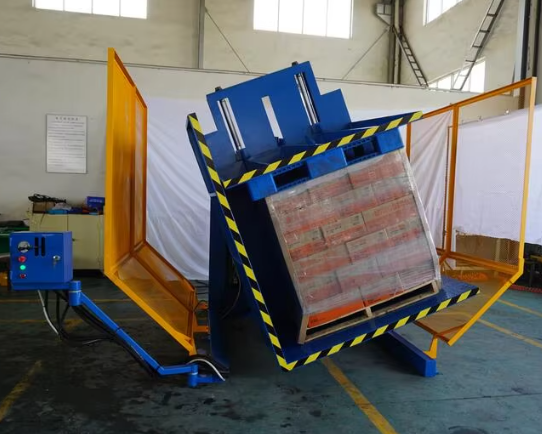
A Practical Guide to Selecting Your Pallet Inverter
Over the years, I've helped countless clients navigate this selection process. It's something I'm passionate about because the right machine can transform a business. Let’s break it down into a systematic checklist. As an engineer yourself, Javier, I know you'll appreciate a data-driven approach.
Step 1: Analyze Your Load
This is the most critical step. Get precise data on the products you'll be handling.
- Maximum Weight: What is the absolute heaviest pallet you need to rotate? Always choose an inverter with a capacity at least 20-25% higher than your maximum load to ensure longevity and safety. If your heaviest furniture pallet is 1,200 kg, you should look for a machine with a capacity of at least 1,500 kg.
- Load Dimensions (L x W x H): You need to know the minimum and maximum height, width, and length of your palletized loads. This determines the required "opening range" or "jaw opening" of the inverter's clamping platforms. A machine designed for short boxes won't work for tall wardrobes.
- Load Stability and Type: Are your loads uniform stacks of boxes, or are they irregular shapes? Are they solid, like stacks of paper, or fragile, like glass? For heavy but delicate furniture, you'll need an inverter with highly adjustable clamping pressure to hold it securely without causing damage.
Step 2: Evaluate Your Facility and Workflow
Where and how will the machine be used?
- Footprint and Layout: Do you have a dedicated space for a stationary machine? Stationary, or free-standing, inverters are typically more robust and faster, ideal for a centralized pallet exchange area.
- Forklift Accessibility: How will you load the inverter? Most are forklift-loaded. Ensure you have enough maneuvering space around the machine. Some models can be loaded at ground level with a pallet jack, which can be useful in tighter spaces.
- Throughput Requirements: How many pallets do you need to process per hour or per day? For high-volume operations, a fully automated, inline system might be necessary. For most warehouses, a standard semi-automatic, free-standing model is the most cost-effective solution.
Step 3: Compare Inverter Types
Based on the data above, you can now look at specific models. Here’s a comparison of common types:
| Inverter Type | Description | Best For | Key Considerations |
|---|---|---|---|
| Free-Standing | A stationary unit loaded by a forklift. It's the most common and versatile type. | General-purpose use in warehouses and distribution centers with dedicated space. | Requires forklift and operator. Excellent balance of speed, cost, and capacity. |
| Ramp-Loaded | Similar to free-standing but includes a ramp, allowing it to be loaded with a pallet jack. | Facilities where forklifts are not always available or in areas with limited space. | Slower loading process compared to forklift-loaded models. |
| Inline/Automated | Integrated directly into a conveyor line for fully automated pallet transfer. | High-volume production and packaging lines where speed is critical. | Highest initial investment. Requires complex integration with existing systems. |
| Mobile Inverter | A self-propelled unit that can drive to the pallet, clamp it, and move it. | Very large facilities where moving the inverter to the pallet is more efficient. | Lower throughput and capacity than stationary models. Higher maintenance complexity. |
For most applications involving heavy furniture, a robust, forklift-loaded Free-Standing Pallet Inverter offers the best combination of performance, safety, and value. It can handle heavy loads, has a large opening range for bulky items, and its operation is fast enough for all but the most extreme high-volume scenarios.
When you speak with a potential supplier, come prepared with this data. A good partner will ask you these questions and guide you to the right solution, not just sell you the most expensive machine. This is the foundation of a long-term, successful relationship.
My Insights
When I started my journey in this industry, first as an engineer on the factory floor and later building my own company, SHJLPACK, I learned a crucial lesson. It’s a lesson that I believe separates good businesses from great ones. We often look at machinery, like a pallet inverter, through the narrow lens of cost. We ask, "How much is it?" But as business owners, especially those of us in demanding industries like steel or manufacturing, that is the wrong first question.
The right question is, "What problem does this solve, and what is the cost of not solving it?"
You, Javier, have built a 2 million-ton steel mill. You didn't get there by focusing only on upfront costs. You got there by making strategic investments. You introduced a waste heat recovery system not because it was cheap, but because you saw the long-term strategic value in reducing energy dependence. You implemented a smart scheduling platform not as an expense, but as an investment in efficiency and a direct answer to market volatility.
A machine like a pallet inverter should be viewed in the exact same light. On the surface, it’s a device for flipping pallets. But strategically, it's much more.
- It's an investment in quality control. By eliminating manual handling, you are protecting the integrity of your final product, whether it's a finely crafted piece of furniture or a carefully wound coil of steel.
- It's an investment in your people. You are removing a source of physical strain and injury, showing your team that you value their well-being. This fosters loyalty and reduces the massive hidden costs of employee turnover and compensation claims.
- It's an investment in operational resilience. It removes a critical bottleneck. It standardizes a process, making it predictable, fast, and efficient. This directly contributes to your goal of 95% equipment uptime and helps you adapt to swings in demand.
When my clients see this shift in perspective, the conversation changes. We're no longer just talking about a machine. We're talking about a partnership. We're discussing how this piece of equipment fits into their larger goals of digital transformation, cost reduction, and creating a safer, more productive workplace.
I built my business, SHJLPACK, on this philosophy. My goal isn't just to sell a machine. It's to share the knowledge I've gained over decades to help other business owners like you succeed. A pallet inverter is a simple, powerful tool. But its true value is unlocked when you see it as part of a larger strategy to build a stronger, more efficient, and more profitable business. That is the total solution we aim to provide.
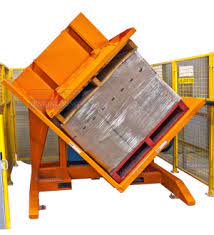
Conclusion
Ultimately, a pallet inverter transforms a risky, costly manual task into a fast, safe, and efficient automated process, protecting your products, your people, and your profits.

